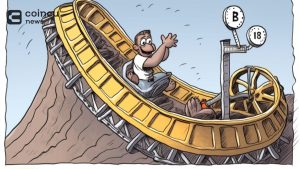Bitcoin mining difficulty has just dropped 28% – but will this help BTC price bounce back?
Bitcoin (BTC) saw its biggest drop in difficulty of almost 28% on July 3, but one model suggests that BTC price won’t bottom until October.
In one a bunch of tweets On July 2, Chief Investment Officer Timothy Peterson cited the relationship between Bitcoin price and hash rate as controversial evidence that the decline was not over.

Hash Rate Model: The Long Road To Bitcoin Bottom đáy
Bitcoin mining difficulty was estimated to be down 27.94% on Saturday at a block height of 689,472, the largest in its history.
As previously explained by Cointelegraph, this decline is due to the continued exodus of miners from China and the subsequent drop in the hash rate.
For miners who are still working, the drop will be a profit booster – the difficulty automatically takes into account changes in the hash rate, which is all the more attractive to me the lower it is.
It is expected that miners in this sector will not fully return to their craft for several months. During this time, the difficulty is likely to increase again as the hash rate increases – more competition and more power to fight for the same reward.
There is a classic mantra among Bitcoiners that “price follows hash rate” – but if that’s true, a phenomenal chart pattern paints a sobering picture of future price behavior.
Peterson notes that the relationship between price and hash rate is “useful” when it comes to marking macro price spikes.
An accompanying graph shows the peaks in 2013 and 2017, which correspond to peaks that were maintained throughout the four-year halving cycle.
2021 looks similar, but since the investment in May the ratio has tended towards 1 – the point in time when the Bitcoin price should have completely “corrected” itself.
“Based on the current trend at P (h), this bubble will collapse on October 31st,” summarizes Peterson.
“The price includes any combination of a higher hash rate and a lower price. Increasing the hash rate and stabilizing the price will also solve the bubble. “

In other words, the return of miners is likely to fend off further declines on the order of magnitude recently seen, but the bulls may have to wait longer than desired to get back to higher levels.
An important warning came from Peterson, who warned that “a lot was wrong” with such a simple model and that he was not using it himself.
Choose your year-end sale
That pattern isn’t the only source of Bitcoin’s return in the second half of this year.
Related: Bitcoin Drops 4.5% Amid Lower BTC Price Indicator Warning Could Still Come
As Cointelegraph reported, analysts compared 2021 to two previous highs, with those years seeing the first local price high and then correcting to the final high.
After BTC / USD posted its third consecutive monthly red candle, the stock’s price following pattern repeated itself in early 2019, shortly after Bitcoin’s last major bear market ran into trouble.
The PlanB inventor says the next six months will be critical to its benefits.
.
.
















